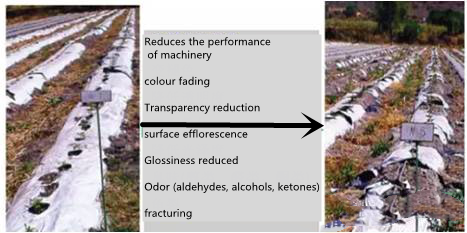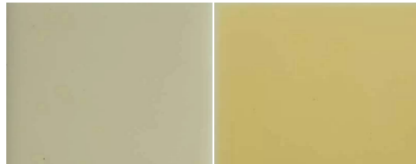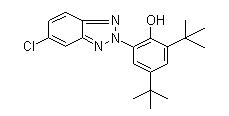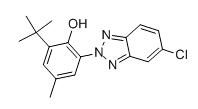Address:Room 906, building 6, SIIC Center, No.195 Hong Kong East Road, Laoshan District, Qingdao city, Shandong Province, China
E-mail:info@deltachem.net
UV absorber is an essential additive for plastics. It belongs to light stabilizer, which produces a stabilizing effect by absorbing and transforming the destructive UV light in the sunlight. UV absorber is mainly used in plastic products, such as plate, cable, pipe and other thick products. In many cases, in order to inhibit or delay the negative effects of UV light on the protected items, plastic film will also be added to UV absorber.
As we all know, the energy of the radiation is inversely proportional to the wavelength, the shorter the wavelength, the greater the energy. So UV light with shorter wavelength has greater damage to polymers. The bond energy of organic polymers is usually in the range of 290~400kJ/mol, that’s also why it is easy to be destroyed by UV light. Therefore, the main factor of plastic photoaging is ultraviolet radiation.
Polymer materials such as plastics have many excellent properties due to their long enough macromolecular chains. However, the polymer material is easy to form electron excited state after absorbing high energy ultraviolet ray. Molecules in this excited state can initiate a series of photochemical reactions, known as free radical chain reactions, and at the same time "photooxygen aging" or "photooxidation reaction" occurs. The cutting off of molecule chain or the cross-linking of molecule directly affects the properties of polymer materials, which leads to a series of aging phenomena. For example, the color becomes darker, brittle, hard, surface cracking , mechanical and electrical properties decline, eventually resulting in the loss of its use value.

Polymer materials have different molecular structures, and their resistance to UV light is also different. In other words, different polymer materials have different "photostability". For ABS, SBS and other polymer materials containing unsaturated bonds (such as double bond), it is easy to absorb UV light and take place photooxidation reaction, so their photostability is poor. However, polymers containing only saturated chemical bonds which absorb less ultraviolet light is relavant stable.

Comparison of ABS before and after UV aging
Actually, the polymer with saturated key doesn't exist, because in the process of industrialization, such as polymerization, extrusion granulation, injection molding, storage, Some impurities (catalyst residue, trace hydroperoxides, etc.) are inevitably introduced. These light-sensitive impurities, after absorbing UV light, will trigger the photoaging reaction of the material.
UV absorbers are the most widely used light stabilizers at present. It can selectively absorb the high energy ultraviolet light. The energy that absorbs comes out with heat energy or harmless low energy radiation or consume, prevent UV damage to the plastic.

UV absorbers contain a wide range of compounds. Divided by structure, it mainly includes Benzophenones, Salicylate, Benzotriazole, Substituted acrylonitrile, Triazine and so on. The most commonly used in plastic industry is benzophenone and benzotriazole.
At present, Benzophenone is one of the popular additives in the actual production process. It can absorb almost all the ultraviolet light region. The key to its light stabilization is the presence of an ortho-hydroxyl group in the molecular structure, otherwise it cannot be used as a UV absorber for polymers. Omnistab UV-531, Omnistab UV-9 , Omnistab BP2, Omnistab BP6 these UV absorbers all fall into this category.


The molecular formula and the appearance of Omnistab UV-531
Salicylate ultraviolet absorber has a long develop history. It can form hydrogen bonds within the molecule, and it has low UV absorption capacity and absorbs over a very narrow wavelength range (less than 340nm). But after a certain amount of energy is absorbed, due to the molecular rearrangement of benzophenone structure with strong ultraviolet absorption ability, resulting in strong light stabilization.

The molecular structure formula of Salicylate
The photostability mechanism of benzotriazole UV absorbers is similar to that of Benzophenone. Hydrogen bonding rings also exist in the molecules of benzotriazole UV absorbers, which are formed by hydroxyl oxygen and nitrogen on triazole group. When ultraviolet light is absorbed, hydrogen bonds break down, turning harmful ultraviolet energy into harmless heat energy. The typical UV-absorbers are Omnistab UV-6100, Omnistab UV-6136, Omnistab UV-6137, Omnistab UV-6139.

Molecular of Omnistab UV-6137

Molecular of Omnistab UV-6136
Advice on the use of UV absorber:
In practical application, in order to improve and enhance the light stability of plastics, the addition of UV absorbers alone can not achieve the desired effect. Because the photoaging process of polymer materials such as plastics is basically accompanied by oxidation, so we usually called "photoaging" called "photo oxygen aging" is more appropriate.
Therefore, it is necessary to take the characteristics of different materials and specific application environment, the characteristics, functions, compatibility, mobility, processability, stability, synergism and other elements as the basis, in order to select the suitable additive formula for a certain polymer material.
Deltachem Co. Ltd. specializes in the production and sales of UV absorbers, light stabilizer and other polymer additives,we have accumulated rich practical experience in the anti-aging and anti-yellow additive formula. Our company has a professional technical team, which can provide the overall solution according to your needs. Look forward to your inquiries!